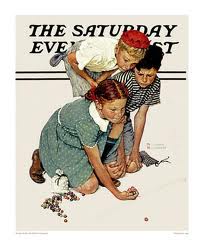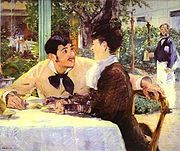
Realism: Replicating what is real
 We’ve all heard the modern expression, “get real.” Did you know it had its roots – at least in the art world – in the 1800’s? Traveling back to the mid 1800’s, the artists of the Realist school emerged in France. They wanted to move away from the idealization of a subject, which was widespread among such art movements as Neoclassicism and Romanticism. These artists wanted to show the natural truth of their subject. Realist artists often chose subjects for their art from everyday life around them.
We’ve all heard the modern expression, “get real.” Did you know it had its roots – at least in the art world – in the 1800’s? Traveling back to the mid 1800’s, the artists of the Realist school emerged in France. They wanted to move away from the idealization of a subject, which was widespread among such art movements as Neoclassicism and Romanticism. These artists wanted to show the natural truth of their subject. Realist artists often chose subjects for their art from everyday life around them.
Edouard Manet is a well-known French painter, who was born in 1832 in Paris and was prominent in the Realism movement. He particularly enjoyed creating art based upon his observations of social life and leisure activities in 19th century Paris. His work was characterized by loose brushstrokes and minimal detailing.
Norman Rockwell is a beloved American illustrator and painter, who was born in the late 1800’s in New York City. Abrakadoodle students enjoy creating art in his realistic, if not idealized style, which depicted a truly American way of life. Rockwell was inspired by the works of Rembrandt and he followed his style by working in Realism while many artists of that time were focused on Abstract art. He created art that is treasured to this day and represented family life, activities such as Boy Scouts and many of his works conveyed good cheer and playfulness.
Children can really enjoy working in the style of realism because it focuses upon everyday life. Sketchbooks are particularly fun for children ages six and up. Encourage them to use their sketchbooks or paper to capture simple drawings of things they see occurring around them, such as mom brushing sister’s hair, a puppy taking a nap or a friend playing a game. By doing so, children capture the essence of realism and have fun recording everyday events. Remember to honor the process of creating art and focus more upon your child’s vision than evaluating the finished project. Promote discussion by saying, “Tell me about your artwork” or “What were you thinking about when you created this picture?” These types of quesitons can help provide insights into your child’s vision or purpose.
